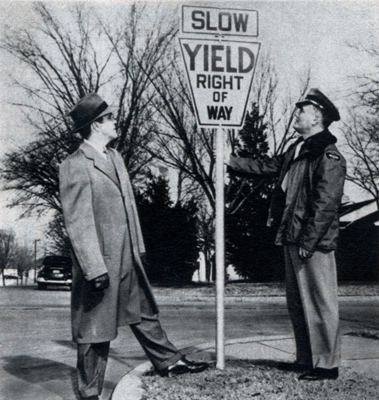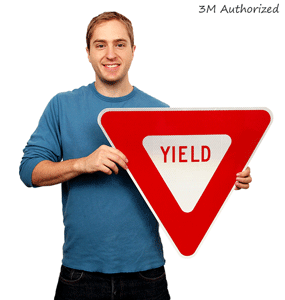The Manual on Uniform Traffic Control Devices (MUTCD) added the yield sign in 1954 to assign right of way at intersections where a stop was not normally required. However, rather than a keystone, the yield sign was now shaped like a point-down equilateral triangle with black lettering and border, though the sign remained yellow. Triangles are highly visible and draw the eyes, making them better signs for drivers looking for immediate information. Yield signs are the only signs that are shaped like a triangle, the unique shape makes them difficult to miss. By September 1956, the St. Petersburg Times, a Florida newspaper, printed an article that detailed the use of a yield sign and commented on its wide spread.


